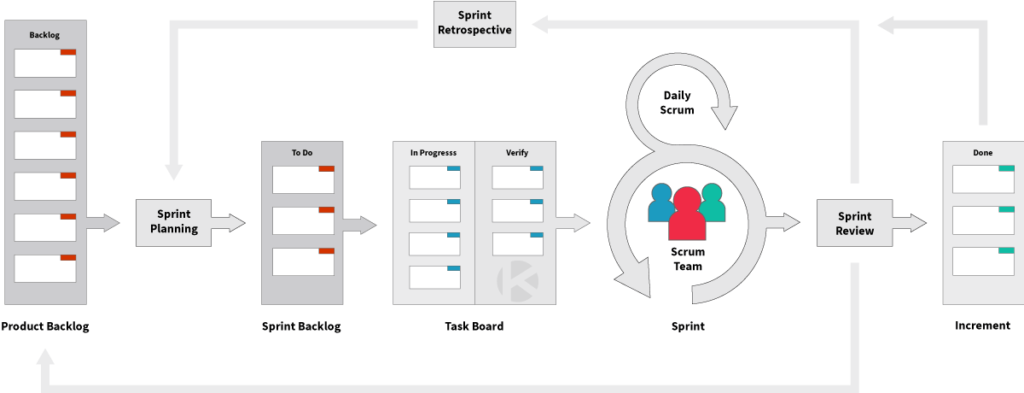Scrum is an Agile methodology that is extremely effective in delivering complex software and new product development using an iterative and incremental approach. This methodology significantly increases productivity while also focusing on product quality. The continual interactions between the Scrum team and the key stakeholders improve customer satisfaction and build strong levels of trust across the organization. Be sure to check our Scrum templates in Kanban Zone to more efficiently flow work in your sprint.

- Scrum is an Agile process that allows us to focus on delivering the highest business value in the shortest time
- It allows organizations to rapidly and repeatedly inspect actual working software
- The business sets the priorities. Scrum teams self-organize to determine the best way to deliver the highest priority features
- Every iteration anyone can see real working software and decide to release it as is or continue to enhance it for another sprint
Getting started with Scrum
We’re losing the relay race
“The… ‘relay race’ approach to product development…may conflict with the goals of maximum speed and flexibility. Instead a holistic or ‘rugby’ approach—where a team tries to go the distance as a unit, passing the ball back and forth—may better serve today’s competitive requirements.”
– Hirotaka Takeuchi and Ikujiro Nonaka, “The New New Product Development Game”, Harvard Business Review, January 1986.
Whether you just read a book about Scrum or you are ready to try anything else than what you are currently doing, getting started with this methodology is very simple. It will be important to set the right level of expectation within your organization or team… The rewards of rolling out Scrum are great, but the work to get there is also great. It absolutely starts with education, but depending on your readiness, it can be very fast to implement Scrum and see positive results in a short period of time. The key will be to keep learning and improving all along with this transformation as this methodology focuses on continuous improvements.
Here are the typical steps we would take to implement Scrum in your organization or team:
- Meet with the key stakeholders responsible for choosing the method and assess their agile readiness
- Get a high-level understanding of the product(s)
- Conduct an agile Scrum presentation with the key stakeholders and possible key players
- Identify the Product Owner(s)
- Start building the product backlog
- Assemble the team
- Start sprinting
To find out more about this process, simply read the official Scrum Guide online.
Are you ready to unleash your full potential with Kanban?
Start your journey of self-development with your Personal Kanban, or set up a Portfolio Kanban system to visualize your ideal workflow.
Leverage our team of Kanban experts and receive our Kanban email educational series.


